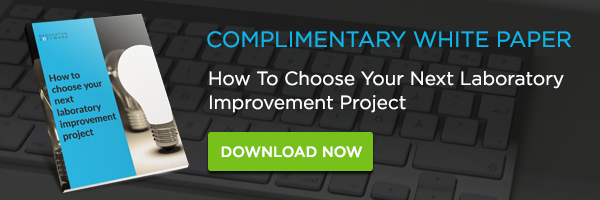
Many laboratories operate as a standalone business or as a supporting function within a larger organisation. Their goal is to provide accurate test data quickly, so their customers (internal or external) can make decisions. In a competitive market, how can laboratories increase
throughput without compromising on quality and accuracy? In the book, Good to Great, Jim Collins addresses these types of questions for businesses in general. The concepts he developed from studying business performance can be also be applied similarly to laboratory operations. From his study, a transformation process involving the following three stages was evident within the businesses that made the leap from Good to Great: Disciplined People, Disciplined Thought and Disciplined Action.
Stage 1: Disciplined People
If you ask most CEOs, Directors or any member of the Management Team, they will probably tell you that finding the right people is the most difficult part of their job. It’s easy to find someone who matches the job specification with the right background, knowledge and skills, but how easy is it to find someone with quality characteristics and innate capabilities? Good to Great companies have a rigorous selection process for recruitment to make sure they get it right up-front. If they get it wrong, then they invest substantial time and effort to determine if the person is in the wrong role before concluding they have the wrong person entirely.
Stage 2: Disciplined Thought
Having a focussed strategy on what the business is aiming to achieve creates clarity for your team and nurtures collaboration. So how do you create a focussed strategy? Jim Collins describes this as the Hedgehog Concept. It consists of three circles interlinked like a Venn diagram, and the middle where all three intersect represents a clear and focussed strategy. The first circle is an understanding of what you can be best in the world at. A business may have core competence, but this doesn’t necessarily mean they can be the best in the world at it. The second circle is your economic engine. All Good to Great companies ensure their strategy returns robust cashflow and profitability. The third circle is what are you deeply passionate about. Put simply, focus on activities that ignite passion. Once you’ve found your intersection, the key to successful execution of a focussed strategy is not only consistency but flexibility in line with market feedback.
Stage 3: Disciplined Action
Once you have the right people in the right role, and your Hedgehog Concept defined, the final stage in transformation from Good to Great is disciplined action. One example where Good to Great companies demonstrate disciplined action is how they are fanatically consistent with the Hedgehog Concept. They set objectives, and through a culture of self-disciplined people, they are willing to go to extreme lengths to fulfil their responsibilities and meet their objectives. Where breakthrough performance is then realised, technology is used to accelerate that momentum, not create it.
In laboratory operations, these concepts can be applied to help you grow and maintain operational efficiencies. Keep in mind that the transformation from Good to Great is a process whereby each stage provides a foundation for successful execution of the next stage.
If your laboratory is at Stage 3, what disciplined action are you going to take next?






